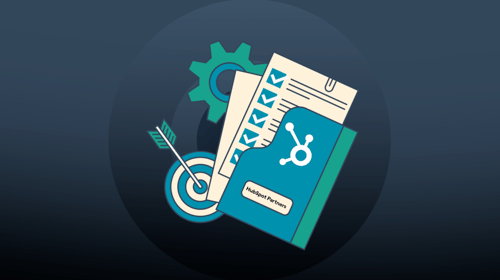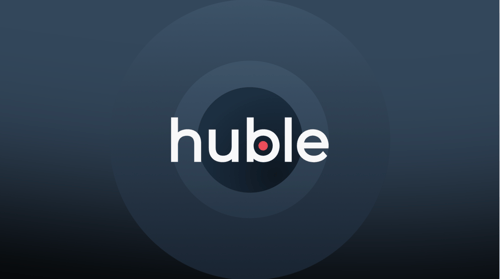When launching a new website, there is a sequence of quality assurance checks every company should conduct to ensure your website is safe, secure and user friendly. In this blog, Mark Adams, Quality Assurance Specialist at Huble Digital, runs through the quality assurance checks we run at Huble Digital.
Quality assurance checks refer to a process of ensuring everything on your website is set-up and working as it should – from code standards and internal links to legal licensing.
At Huble Digital, we run through a regimented checklist of items before launching a client website, which we’ll run through below. But whether you work with a marketing consultancy or run your marketing in-house, these steps should be carried out meticulously before any website goes live for the world to see. These checks are crucial to ensuring your website is user friendly and ready to be used by your customers.
In fact, there is a misconception that quality assurance checks should only happen before you launch – these checks should continue to happen on a weekly to monthly basis post-launch to ensure everything is working correctly.
So, feel free to bookmark this blog and see it as your fail-proof guide to launching and maintaining a successful website:
1. Remove the dummy content
The first quality assurance step we take is to content pop the website. This involves removing any dummy content you have on the web pages and adding in the actual content.
When swapping in the content ensure that your content is:
-
easy to read
-
font size and colours are consistent
-
images are optimized with alt tags on all
-
video and audio files work correctly
2. Make sure you have a contacts page
Every website needs a contacts page so that users can get in touch with them. A contacts page also improves the credibility of your website as customers are able to find your business on LinkedIn or other forums that help to build consumer trust.
3. Check your navigation works
Make sure that the navigation works across your site. In a competitive landscape, a user-friendly site is one of the key aspects that can differentiate you from competitors and keep customers on your website. Customers should be able to easily find pages and navigate through your website without confusion.
Tip: Try testing your website on friends and family by asking them to find a particular page. If they get confused or can’t navigate through your website, you’ll understand the gaps in your user journey.
4. Check all URLs and site links work correctly
When a website moves from the staging to production phase, it’s not uncommon to come across broken links in the process so make sure to triple check that all the URLs and site links work across your website.
You should also ensure you have a 404 page built. This is a branded page your customers will be sent to if anything ever breaks in the future.
5. Check your site usability
In this stage, you need to imagine you’re a customer coming on to your website for the first time. This is where you ensure everything is functioning as it should in order to please and convert your customers.
(E.g., If there’s a video on your website, it should play seamlessly without delay or flashing an error).
These tests entail making sure:
-
Images are optimised
-
Page load speed times are correct
-
Forms are working correctly and capturing data correctly
-
CTAs click-through correctly and are easily to understand
-
Modules are functioning as they should
-
Check boxes and radio buttons work
-
All data is also being captured into the CRM
-
The overall UX is seamless (e.g. If you fill out a form, are you directed to a TYP?)
-
(If applicable) Payment process is set up correctly
6. Responsiveness checking
Responsiveness involves checking your website is responsive on mobiles devices and tablets. In today’s world, ensuring your website is optimsied for all platforms is an essential part of your quality assurance checks. This involves checking all forms work correctly on different devices and ensuring the overall usability and navigation around your website works across mobile and tablet.
7. Check browser compatibility
The next tip is to make sure that your website is compatible across different browsers. We’d recommend testing your website on major browsers including Chrome, Safari and Firefox to ensure it displays as it appears on your current browser.
Hear how we migrated Corinium Intelligence’s website to the HubSpot CMS here.
8. SEO
Good or bad SEO can make or break a website. Before launching, you should always ensure your pages are optimised. This means your website can be found and ranked higher on major search engines, such as Google, so you can be found by your target consumers.
This involves checking all:
-
Pages have a title. These need to be unique and within the word count
-
Pages have a meta description. These should act as CTAs and include the page keywords
-
Pages are optimsied for keywords
Tip: Use this tool to help you build page titles and meta descriptions
9. Check your sitemaps
Check your XML and HTML sitemaps are set up correctly and include all the content it should.
You should also check your robots.txt file at this point which help search engines crawl your website more efficiently.
10. Social media integration
At this stage, it’s important to test your social media integration. The share functionality on your social buttons should lead directly to the different platforms, functioning perfectly.
11. Check your website is secure
With bots and hackers just waiting to seize their latest prey, security should be the biggest step you take in protecting your customers on your website.
This includes ensuring you have an SLL certificate. Without a certificate, Google will often alert users that your website is ‘Not secure’ – putting off potential buyers.
Some CMS platforms, such as HubSpot, take care of the security of your site for you and a website built on their CMS is automatically SLL certified with a host of security checks installed. Find out more about the HubSpot CMS security here.
12. Check your legal requirements!
Although a far less exciting task, ensuring you meet all the legal requirements is crucial to launching a new website – and should be regularly checked and maintained post-launch.
These checks include:
-
Ensuring you are GDPR compliant
-
Making sure you have cookie warnings in place
-
Ensuring you have the correct licensing for images, audio, fonts etc.
-
Including a comprehensive T&Cs on your website
-
Checking your legal requirements for taking and holding funds
Next: launch time …
After following the guide above your website should be ready to launch into the world.
There are plenty of quality assurance checks you need to conduct when launching a new website but these 12 should be your highest concern to ensure your website is safe and ready for users.
If you follow this list and regularly check them on a weekly to monthly basis, you will be set to deliver the best possible user experience for your customers.
If you’re thinking of purchasing the HubSpot CMS but want to know more, we ran a webinar with Luke Summerfield at HubSpot on what the HubSpot CMS can deliver for marketers – watch now.
To book some time with us to chat about your website launch, click here.
.png?width=80&height=80&name=Mark%20(1).png)
.png?width=1600&height=800&name=11%20(1).png)







-3.png?width=500&height=320&name=Matt%20-%20imagery%20bank%20(8)-3.png)

